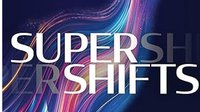Everyone knows the RTI Triangle with the red/yellow/green shading because it basically appears on every type of instructional resource. Unfortunately, the prominence of the triangle itself hasn’t been enough to provide educators with a deeper understanding of its intention. And, worse, those three branded colors have led many educators to place their students into three static groups and to teach three different “levels” of students.
It is important to reach for something beyond those tiers and create a model where educators see children (not colors), learners (not levels), and teaching opportunities (not just tiers). As we enter the 2022/23 school year and propel ourselves forward into a year of real recovery, it is also important to improve the impact of interventions while addressing unfinished teaching and learning, closing proficiency gaps, and increasing the growth of all students.
This all involves reaching for a more responsive approach to RTI.
Below are excerpts from “Putting the ‘Response’ Back in Response to Intervention,” which highlights this important topic while providing actionable steps educators can take to make responsive RTI a reality in their classroom.
Essential Components of Intervention
A successful RTI model is dependent upon the three main components: screening, high-quality instruction, and progress monitoring. These all need to work interdependently and harmoniously. By examining each of these components through a reflective lens, we can see how to turn current practices into more responsive practices.
Screening
Educators use a range of screening assessments to determine a student’s eligibility for Tier 1, 2, or 3 instruction. When normative assessment results are expressed in terms such as percentile ranks, students are placed into an instructional tier based on how they perform relative to other students across the school, district, state, or country. This approach is sometimes called leveling, or bucketing, as students are placed in a group and instructed according to their placement.
One key issue with focusing on norms for intervention placement is that there is little connection between norms and the growth needed for grade-level proficiency, so this approach often begins and ends with the classification of students into fixed instructional categories.
A responsive screening process must include a high-quality, criterion-based screener. It is only with actionable, domain-specific data that educators will be able to understand each student’s specific strengths and instructional needs.
Furthermore, if this criterion-based screener is adaptive, the screener itself will respond to student needs during test administration, providing a higher level of commitment to the intent of RTI/MTSS at the outset. Ideally, the screener will supply educators with an action plan to best support grade level learning.
Instruction
One of the most difficult tasks any educator has is meeting the needs of all learners in one classroom. Bucketing students into fixed “green/yellow/red” instructional groups is a very common default for educators because it distills a daunting range of individual learners down to three groups. This can feel like a more manageable way to plan and instruct. However, this approach is simply not accurate nor responsive enough to bring about growth and proficiency for each learner.
To strengthen instructional responsiveness, educators must see the tiers of instruction as fluid student placements that are dependent upon the upcoming content and the most recent student data that tie specifically to the topic at hand. This approach empowers educators to respond to their students as topics of instruction change. It accounts for and acknowledges that every learner has strengths and areas of need, depending on background knowledge, experience, and proficiency.
For educators to embrace this responsive instructional approach, they must make two commitments:
1. Provide high-quality, differentiated, grade-level (i.e., Tier 1) instruction for all students with appropriate scaffolding or enrichments for those who need it.
Every student deserves to think, learn, and engage deeply with grade-level content each year. Somehow this seminal truth of what we are called to do has been lost in the decades of leveling material when grade-level content has been “too difficult” for students who enter the grade with below-grade level proficiency. As well-intended educators have tried to help these students catch up by providing instruction at their level, they are unintentionally relegating these students to a prolonged loss of grade-level instruction. What started as a small gap will only widen as more and more grade-level instruction is missed over time. Eventually, that gap can become a chasm that educators, students, and their families may see as impossible to close.
A more responsive tactic is to commit to providing grade-level instruction to all students. A Grade 4 student who is reading at a Grade 2 level is still very much a Grade 4 thinker and deserves to do that thinking during Tier 1 instruction. This grade-level thinking leads to knowledge building and proficiency when instructional scaffolds are included to provide more access to texts and deeper engagement.
Supports such as teacher modeling, graphic organizers, preteaching of text structures, vocabulary, and key concepts are examples of scaffolding that can create access to grade-level content for all students. Although it may be challenging, this access is vital to close gaps. Challenge sustains engagement and shows progress moving toward proficiency.
2. Provide fluid and targeted intervention instruction (i.e., Tiers 2 and 3) based on specific student needs with increased focus, coherence, intensity, and specificity of their instruction in priority areas.
As educators provide Tier 1 instruction to all students, it will become increasingly important to utilize the specific criterion-based data connected to instructional content to determine which students have a need for more targeted instruction. Every educator has students who are strong in one area but not another. As the skills and content being taught change, so will the students who need more targeted instruction.
Students who are closer to proficiency in the instructional area should receive instruction that is precise and directly connected on a progression to the Tier 1, grade-level instruction that is occurring. This Tier 2 intervention instruction allows students to move up quickly and is often an essential prerequisite skill for the grade-level instruction they are not yet proficient in. This type of coherence between the tiers brings students’ engagement up and decreases the amount of time needed for intervention.
Students who are further from proficiency in the instructional area should receive Tier 3 instruction that is connected in content but looks very different than Tier 1 or 2 instruction. Tier 3 instruction supplies students with the maximum focus and intensity they need to fill in a foundational gap that is a vital building block in a particular content area. This very explicit instruction is often delivered with specialized curriculum during a short period of time that does not interfere or deny students Tier 1 instruction.
Progress Monitoring
There will always be tension between taking more time for assessing and wanting to use that time for instructing. It is important to acknowledge that tension at a school and classroom level.
Assessment should always be purposeful, and progress monitoring in an RTI/MTSS model has two important purposes. First, it requires educators to evaluate the success of interventions and course correct as needed. Is this student who is showing growth with Tier 3 instruction in vocabulary now ready for a less-focused, less-precise intervention? Is this student who is responding well to Tier 1 instruction for geometry going to need some small group support to prepare for an upcoming unit on fractions?
Purposeful progress monitoring builds in the expectation that periodic adjustments occur across all tiers to deliver effective instruction to each student. This type of routine course correction and adjustment to instruction is at the essence of truly responsive intervention.
Additionally, effective progress monitoring is a way for multiple stakeholders to connect and communicate about the growth and progress of each student. At a building level, grade-level teams can use student growth data to share strategies and observations. Most importantly, growth data can be shared with students and families to celebrate their work and progress.
Reach for Responsiveness
Growth in individual students and an overall tracking toward proficiency occurs when teachers can respond to students’ needs with effective screening, high-quality instruction, and progress monitoring that reveal and address the domain-specific strengths and needs of each student.
We need to establish a new approach to intervention. Let’s replace the traditional, rigid intervention triangle with a more fluid, informed, and responsive approach to intervention. Instead of tying intervention efforts to immutable instructional tiers, let’s see the many different instructional opportunities available to best meet specific student needs. Students are not overall colors, or levels, but rather individuals who have a blend of assets and needs that must be pulled out through screening, improved upon with targeted instruction, and checked in on with progress monitoring.
This responsive approach is possible, but we must reach for it – we must reach past the predictable green/yellow/red fixed grouping strategy, reach for something more closely connected to students, and reach for a truly more responsive approach to RTI.
Additional Resources
“The opportunity myth: What students can show us about how school is letting them down—and how to fix it” (TNTP): https://tntp.org/assets/documents/TNTP_The-Opportunity-Myth_Web.pdf
Response to Intervention (RTI) and Multi-Tiered Systems of Support (MTSS) (Curriculum Associates): https://www.curriculumassociates.com/topics/rti-mtss
About the author
Brooklin Trover is a national director of content and implementation at Curriculum Associates. Her career began with 13 years as an elementary and middle school teacher. Her passion for working with fellow educators in support of student growth led to a five-year school district leadership position coaching and providing professional development. Brooklin’s passion for humanizing data-driven instruction at the district level has inspired teachers and led to gains for students. Brooklin holds an M.A. in Policy Studies of Language, Literacy, and Culture from San Diego State University and an M.S. in Reading from California State University, Fullerton.











